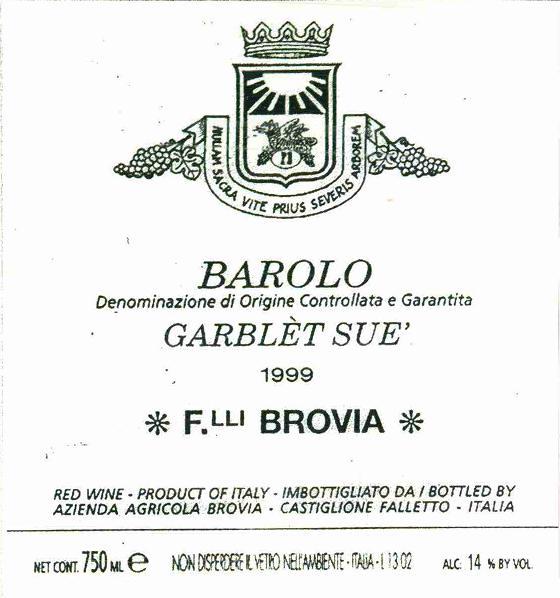1999 Barolo Nebbiolo
Brovia Garblet Sue is a captivating Nebbiolo from the renowned Barolo region, boasting a deep, garnet-red hue that draws you in. This 1999 vintage showcases a medium-bodied profile, beautifully balanced with lively acidity that invigorates the palate. The fruit intensity is prominent, offering complex notes of cherry, plum, and hints of floral nuances, which are complemented by earthy undertones that speak to its terroir. The tannins are notable yet harmonious, providing structure without overpowering the overall elegance of the wine. This delightful wine is bone dry, making it a superb match for rich dishes or simply enjoyed on its own, highlighting the exceptional craftsmanship of its producers in this prestigious wine-growing area.
Brovia Garblet Sue is a captivating Nebbiolo from the renowned Barolo region, boasting a deep, garnet-red hue that draws you in. This 1999 vintage showcases a medium-bodied profile, beautifully balanced with lively acidity that invigorates the palate. The fruit intensity is prominent, offering complex notes of cherry, plum, and hints of floral nuances, which are complemented by earthy undertones that speak to its terroir. The tannins are notable yet harmonious, providing structure without overpowering the overall elegance of the wine. This delightful wine is bone dry, making it a superb match for rich dishes or simply enjoyed on its own, highlighting the exceptional craftsmanship of its producers in this prestigious wine-growing area.




